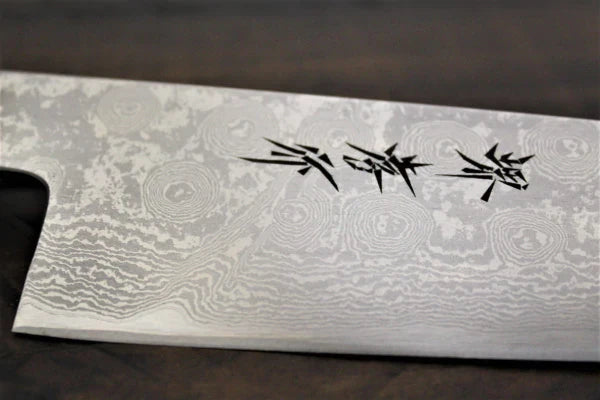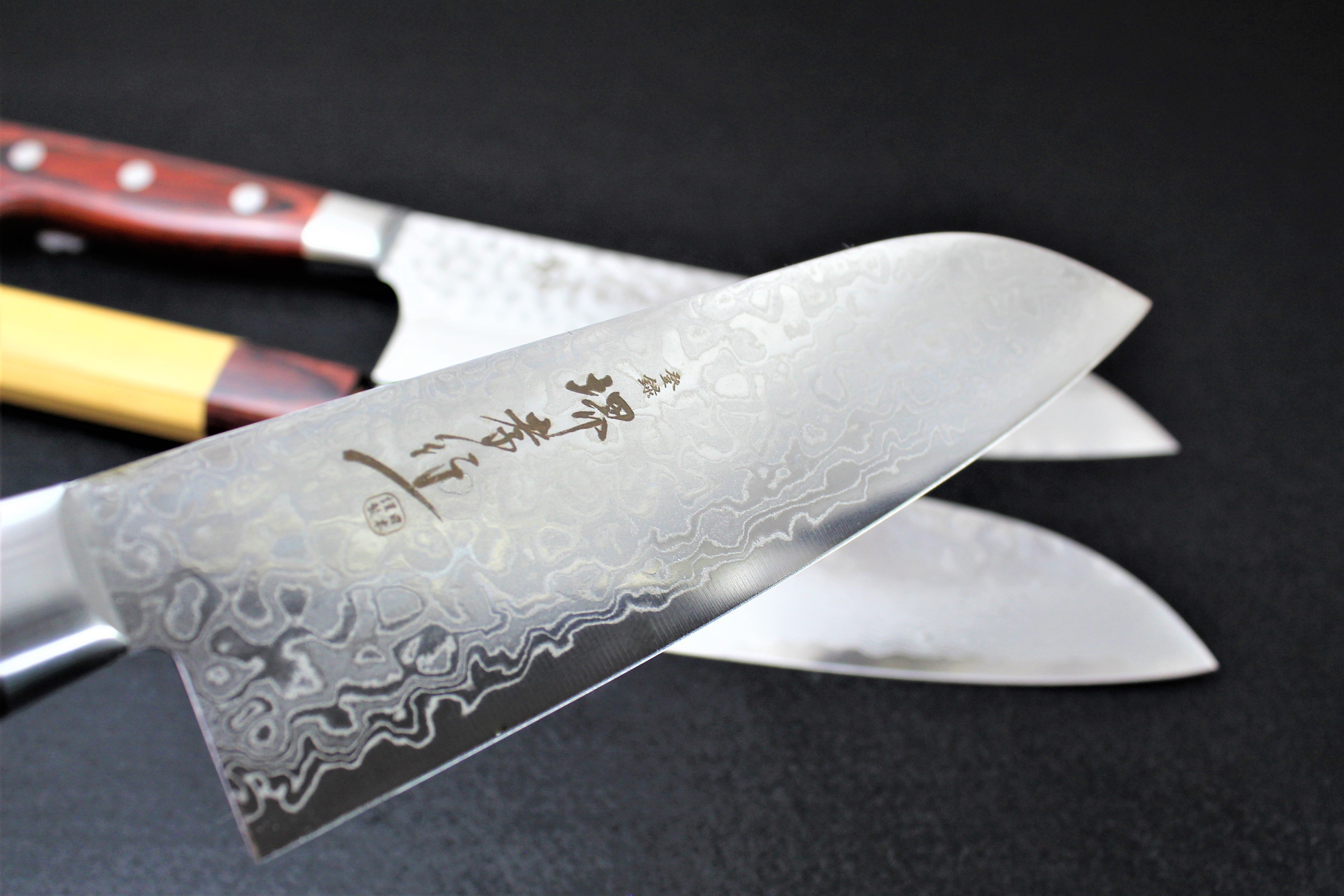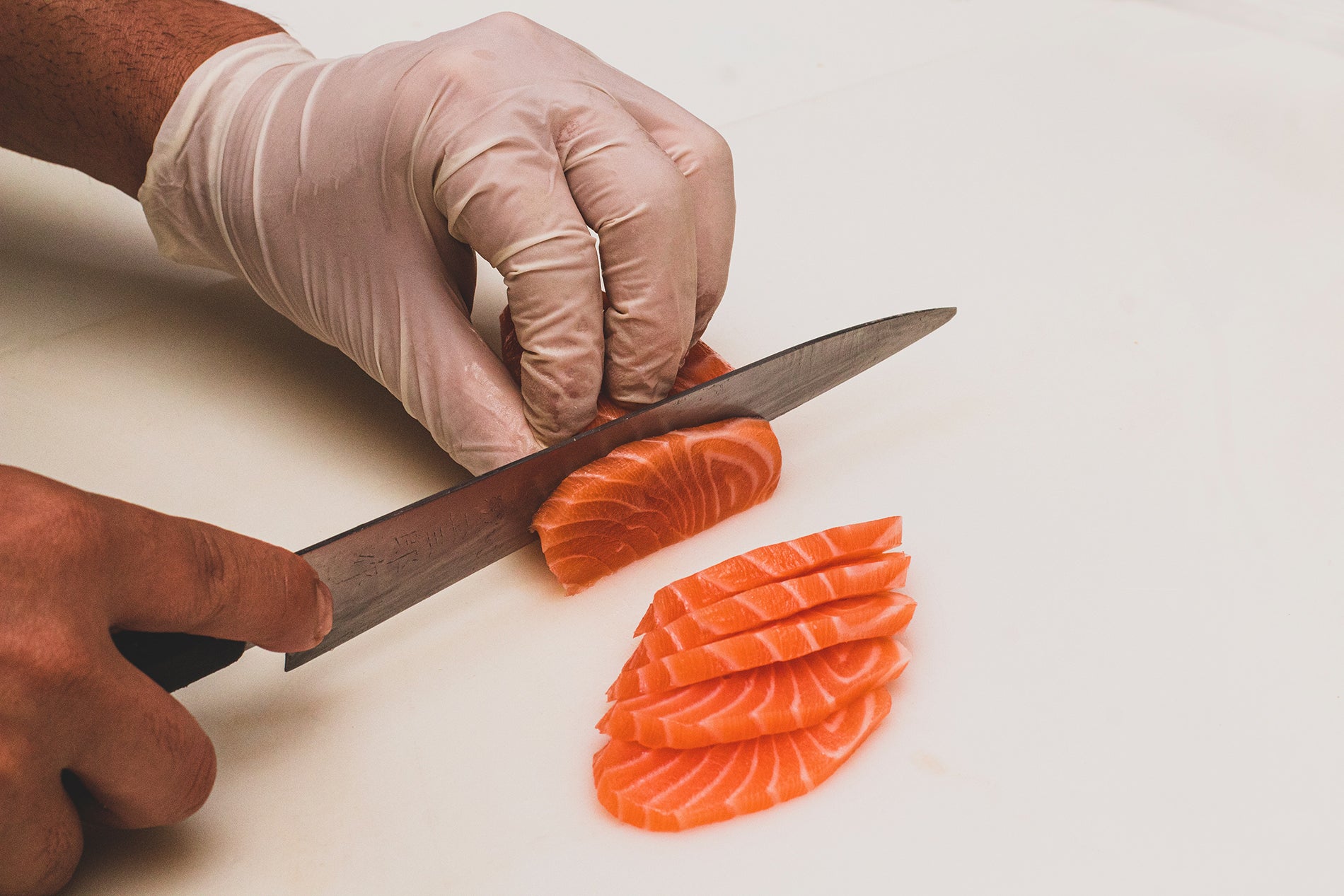
Japanese Knife Vs. German Knife
If you consider yourself a master chef in the kitchen, it's only fair that you want the right tools to support you, and that includes high-quality knives.
An invaluable tool in any kitchen drawer, the right blade will slice through food with technical precision without damaging or bruising it in the process. When your ingredients are cut into equal segments, they cook evenly and make for a great-tasting dish. The question is: which knife should you buy? With numerous high-quality options available, it’s challenging to determine which model is best suited to your cooking style.
In this article, we explain the difference between Japanese knives vs. German knives, discuss the various benefits of the former, and explain how investing in a Japanese knife can take your cooking to the next level.
Japanese Knife vs. German Knife: Understanding the Differences
Steel and Construction
While both Japanese knives and German knives are made from steel, they feature different grades that offer very different results and cutting experiences. Japanese knives typically use steel that contains more carbon, which results in a harder blade that maintains its sharp edge for longer, which makes light work of precision cutting. However, this more rigid blade is more prone to chipping.
Due to the harder steel, the Japanese blades can be thinner, reducing the weight of the knife. Japanese knives are produced with both ‘full-tang’ and ‘partial-tang’. With the ‘full-tang’ construction, the metal of the blade extends the full length of the handle. This makes the knife heavier than a ‘partial-tang’ knife. German knives are only available with a full-tang. For this reason, they are inherently heavier than Japanese knives with a partial-tang handle.
German knives are typically made from steel that is a little softer than their Japanese counterparts. This softer steel is less likely to chip but also requires more frequent sharpening. German knives also feature a ‘full tang’ construction, which describes a single blade that extends from the tip of the knife through to the collar and handle.
While this makes it much heavier than a Japanese knife, it can easily cut through dense vegetables like pumpkin or chop through rigid joints in a cut of meat. Japanese knives benefit from a lighter build that allows you to slice through most foods effortlessly.
Cooking Routine
To assess whether a Japanese or German knife is best suited to your kitchen, consider your cooking style. Are you looking for one knife to use across all your meal preparation? Or do you want to cook with intention and precision?
While the heavy-handed build of a German knife helps slice through certain foods, it can bruise your ingredients if used carelessly or not maintained properly. Since Japanese knives are slightly curved, they enable you to slice vegetables and prepare delicate seafood with finesse.
The sharpness of your knife’s blade is another huge factor when deciding between a Japanese knife and a German knife. With a thinner profile due to the harder steel, the blade of a Japanese knife makes for a sharper and more accurate cutting experience that cannot be rivaled.
Choosing the Right Japanese Knife for the Job
There’s more than one type of Japanese knife. Japanese knife makers design multiple types of knives, each tailored to handle specific kitchen tasks with maximum control.
From a workhorse of a knife like Santoku, the famed Japanese boning knife such as the Honesuki, to the intricate Mukimono designed for detailed carving, Japanese knives will help you achieve the best results in the kitchen. If you're comparing a Japanese knife vs. a German knife and want quality sharpness, balance, and craftsmanship, a Japanese blade from Hasu-Seizo brings all of that and more to your kitchen.
If you want to experience the benefits of a Japanese knife for yourself, browse our complete collection. Invest in a kitchen tool you can enjoy for a lifetime. Guided by tradition, our master craftsmen hand-finish our Japanese knives using traditional techniques. Choosing our products means you can enjoy their high performance at home.


